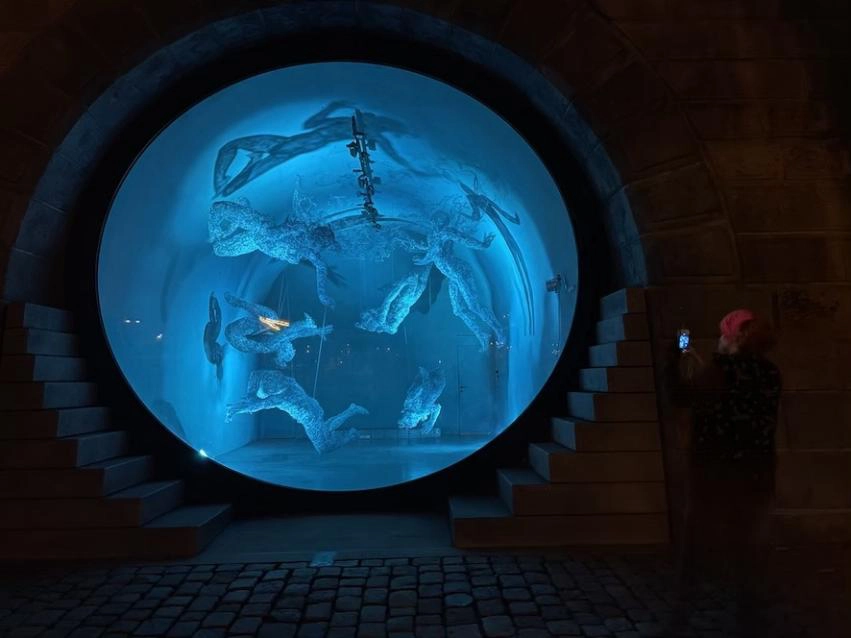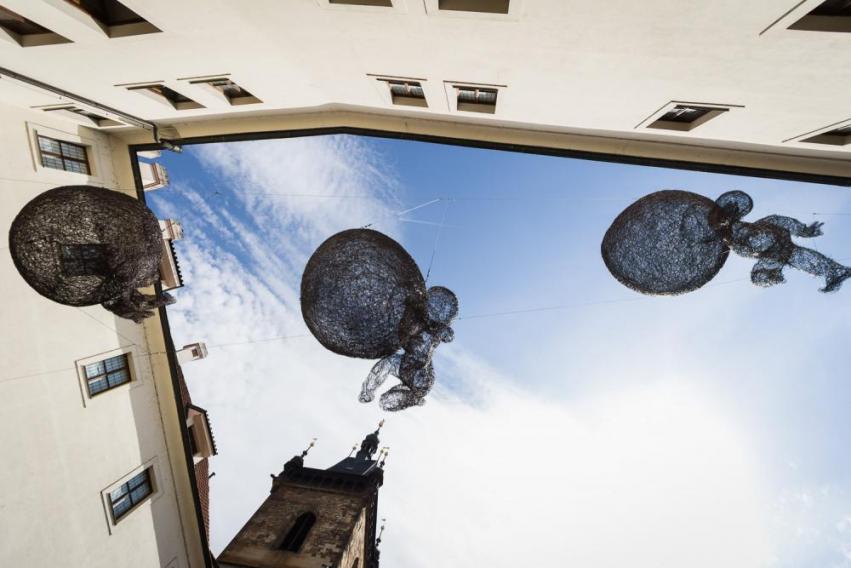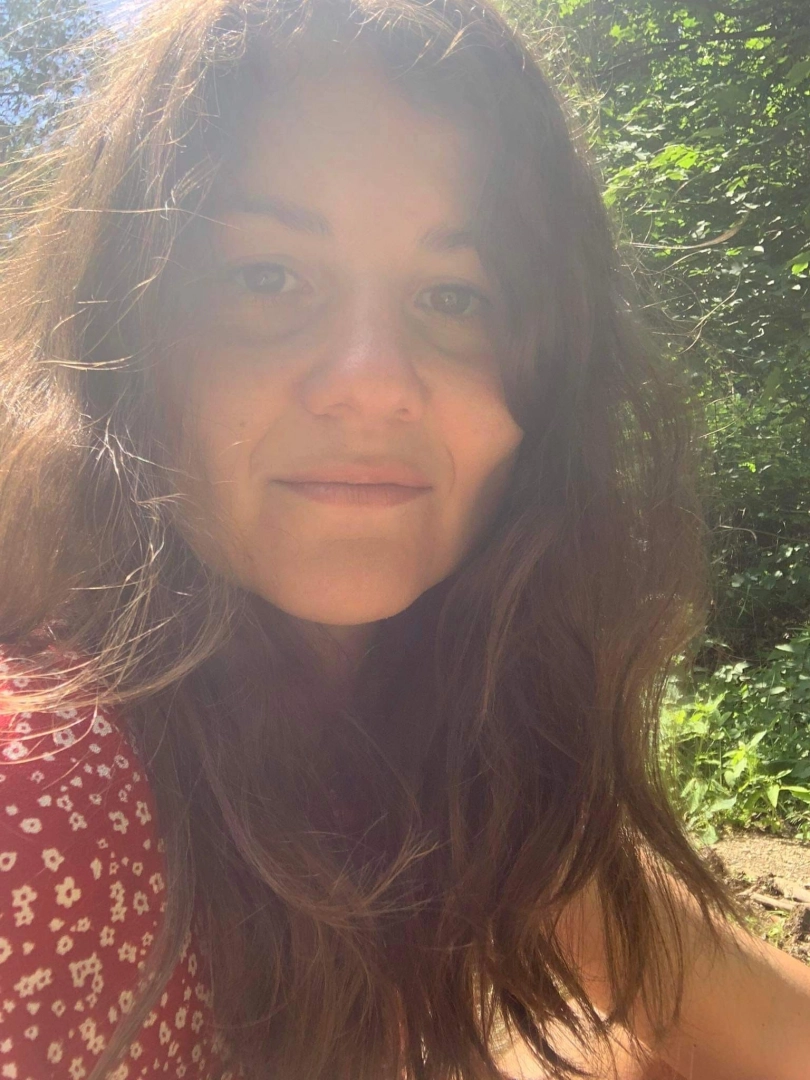She creates her sculptures from an industrial material called woven wire fabric (officially a secondary product of the metallurgic industry). Veronika has chosen this material by chance and stayed with it ever since. Its features and fragile looks bring out the theme of care and evanescence, if the material is exposed to weather conditions.
Handicraft and physicality
“The idea that an art piece brings joy to the one taking care of it is very personal for me. I think that such a relationship between the piece and its “caretaker” is deeper and maybe prolongs its life, too. In principle, I don’t mind that an art piece might have a limited durability and doesn’t make other generations responsible for taking care of it... However, my sculptures don’t just fall apart, some of the oldest ones, which I have in my garden, have just been standing there for about ten years and still hold together pretty well (the limit for their solidity under regular outdoor conditions might be from 25 to 35 years).”
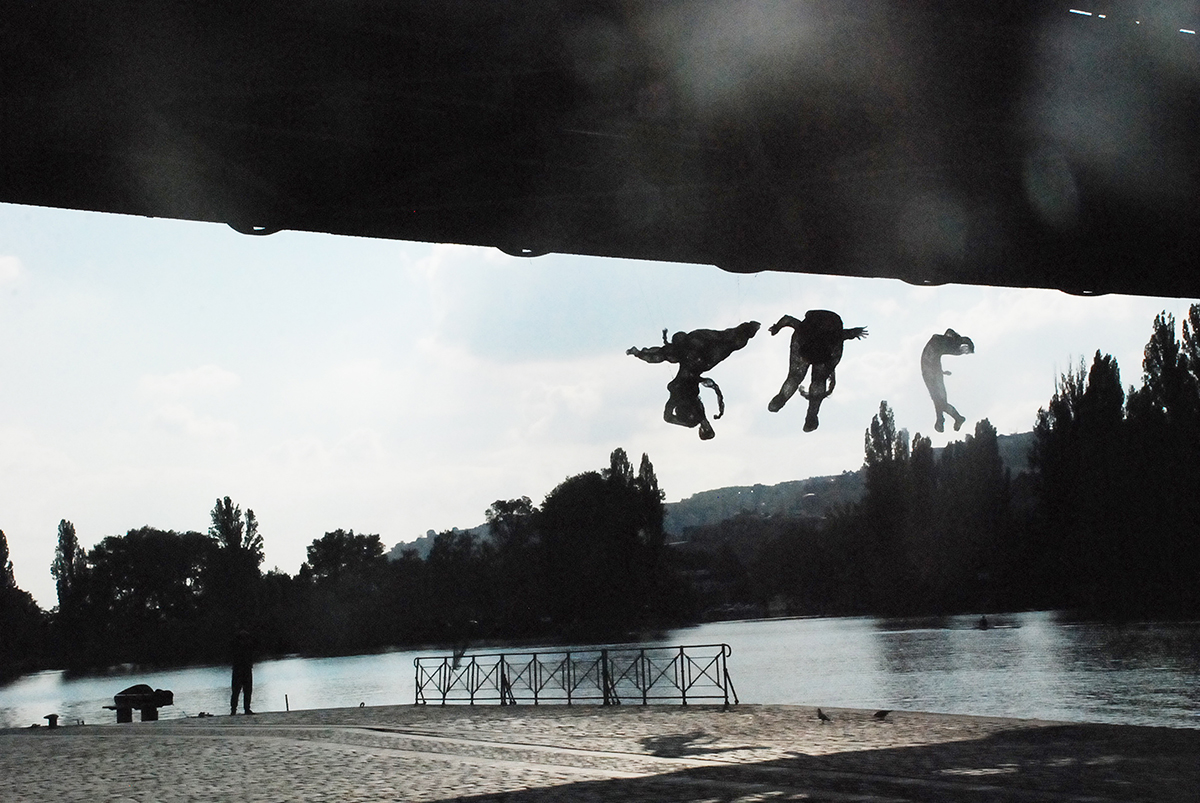
The sculptures, shaped and stitched from plaster mesh, are partially transparent and the author herself calls them “shells” or “spatial drawings”. The shape of the sculptures notably changes depending on the natural or artificial light. Veronika Psotková’s sculptures are often site-specific, they are thus tailor-made for a particular place and often interact with the pre-existing architecture or genius loci. As Veronica's present work is almost exclusively figural, it deals with physicality and the movement, which we focus on in this magazine, is a vital part of it: “I spent my childhood and teenage years doing sports. I’m fascinated by the free, unrestricted movement – overcoming gravity, so to speak – and the elegance of movement, the ability to control it. I used to dream about flying, which is still one of the sources of my inspiration. I used to play basketball, volleyball and beach volleyball and the dreams were usually about the movement on the field. And I like swimming, of course.”
Men in a sauna, gymnasts and synchronized swimmers
Veronika had a sports background as a child. Back then, she had no idea she’d become an artist one day. As she’s taking care of her family these days, she doesn’t have time left for sports, but she managed to stick with sculptures (which is definitely not common especially in this field). Sports then remain a recurring theme in her work.
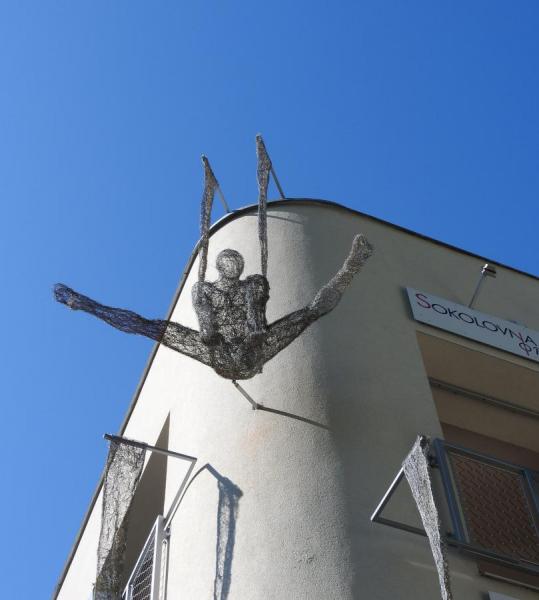
For instance, in 2013, she created a sculpture portraying men sitting in a sauna. This installation was enclosed in a dark box without direct lighting and there was only a tiny window through which the spectator could peek inside and watch the sculptures glowing thanks to a special UV paint. Another sport-inspired sculpture were Synchronized Swimmers created for the atrium in the Forum shopping center in Liberec (another group of swimmers by Veronika Psotková was hanging from a railway bridge over the Vltava river in Výtoň, Prague) The group Gymnasts saw the light of the day in 2016 with the purpose of reviving the facade of the reconstructed Sokol gymnasium in Litvínov.
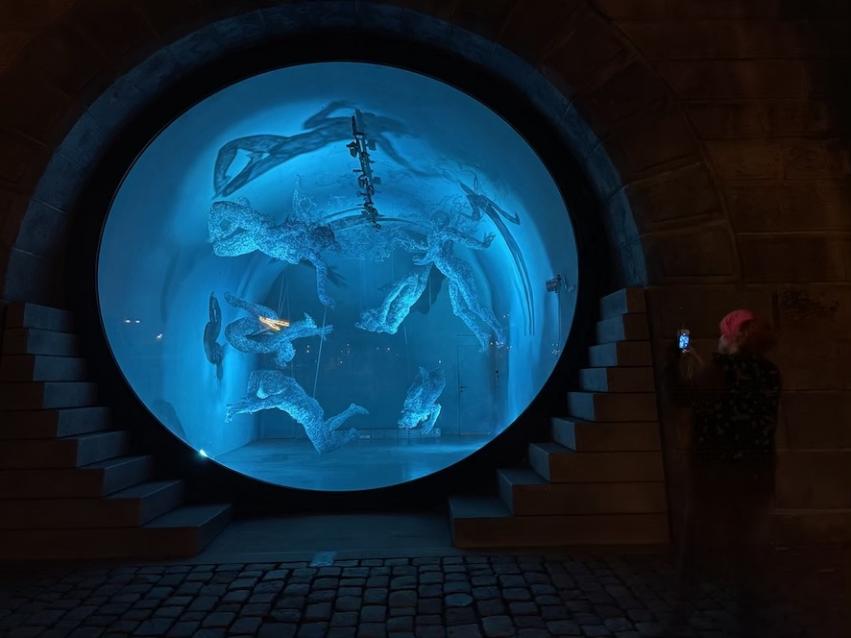
Veronika is quite open about the fact that her work often directly reflects what she’s going through at that time – her sculptural work is actually her journal. Physicality played a crucial role also in her work Euphoria, which she created for the Nové Město town hall. This sculpture portrayed babies sucking on oversized breasts.
Use your space
Another “sport” sculptures were installed in 2021 for the tomb 10 of Prague’s (A!)Void Gallery on the bank of the Vltava. It was one of the few exhibitions realized during the pandemic which in fact benefited from the limited conditions. The sculptures were again site-specific and were symbolically in line with the time of their creation, when due to Covid-19 the society was broken down to smaller units and people were forced to live in smaller separated groups. This isolation was reflected in the installation Dive-in which the passers-by could only watch through the tomb window. According to the author, the installation didn’t only speak about the isolation, but also about the opportunity to enjoy that limited space available to a person at that given moment. The figures were evoking a sense of freedom despite the fact they were hovering, or better said swimming, in an enclosed tomb.
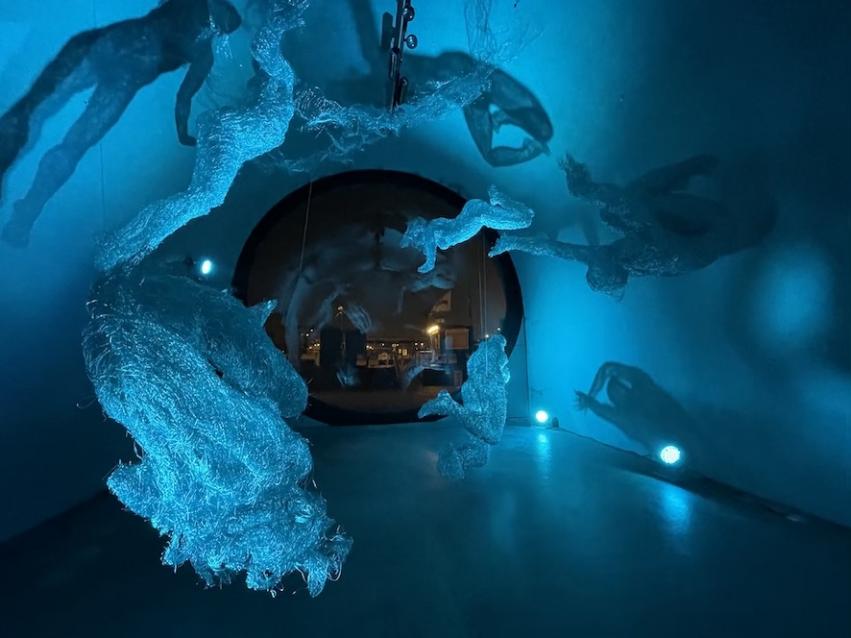
“I observe people, different sports, videos, photos and when something strikes me or suits my general idea, I save it. I have a kind of a library of motifs where I browse when I am creating a thematic installation, I pick something, I redraw it, turn it around as I like until I have a clear idea of the sculpture or the whole installation in 3D,” comments Veronika on her method.
Ukrainian vinok
Veronika’s newest sculpture called Vinok is more political rather than sporting. The author symbolically dedicated it to all the mothers in the Ukrainian war.

Vinok is a traditional Ukrainian headband. The sculpture of a woman wearing this headband is now floating above the Dlouhá street in Prague in reaction to the war in Ukraine. “The custom of weaving decorative chaplets dates to the pagan times. They had a magical significance as the attributes of the Spring and Midsummer celebrations. Over time, the vinok became the symbol of worship, Mother Earth. Ukrainian vinok has become the cultural symbol of the Ukrainian nation a long time ago. Its popularity in the present-day Ukraine has grown even more after the events of 2014. Vinok in Ukraine is the symbol of the Sun. Girls wearing vinoks represented the rising sun. It’s also the symbol of glory, victory, happiness, success, peace, modesty, youth and femininity.”

